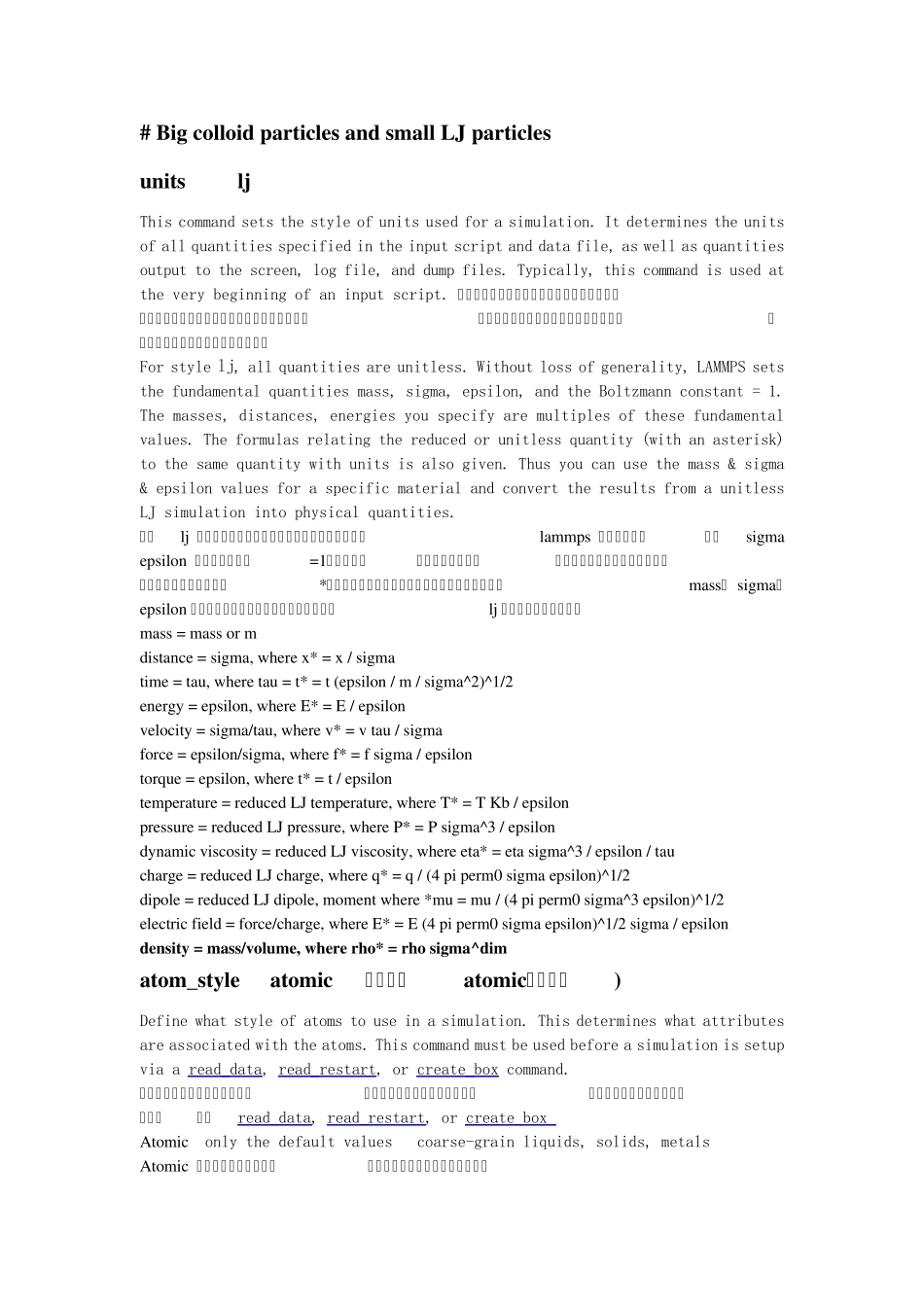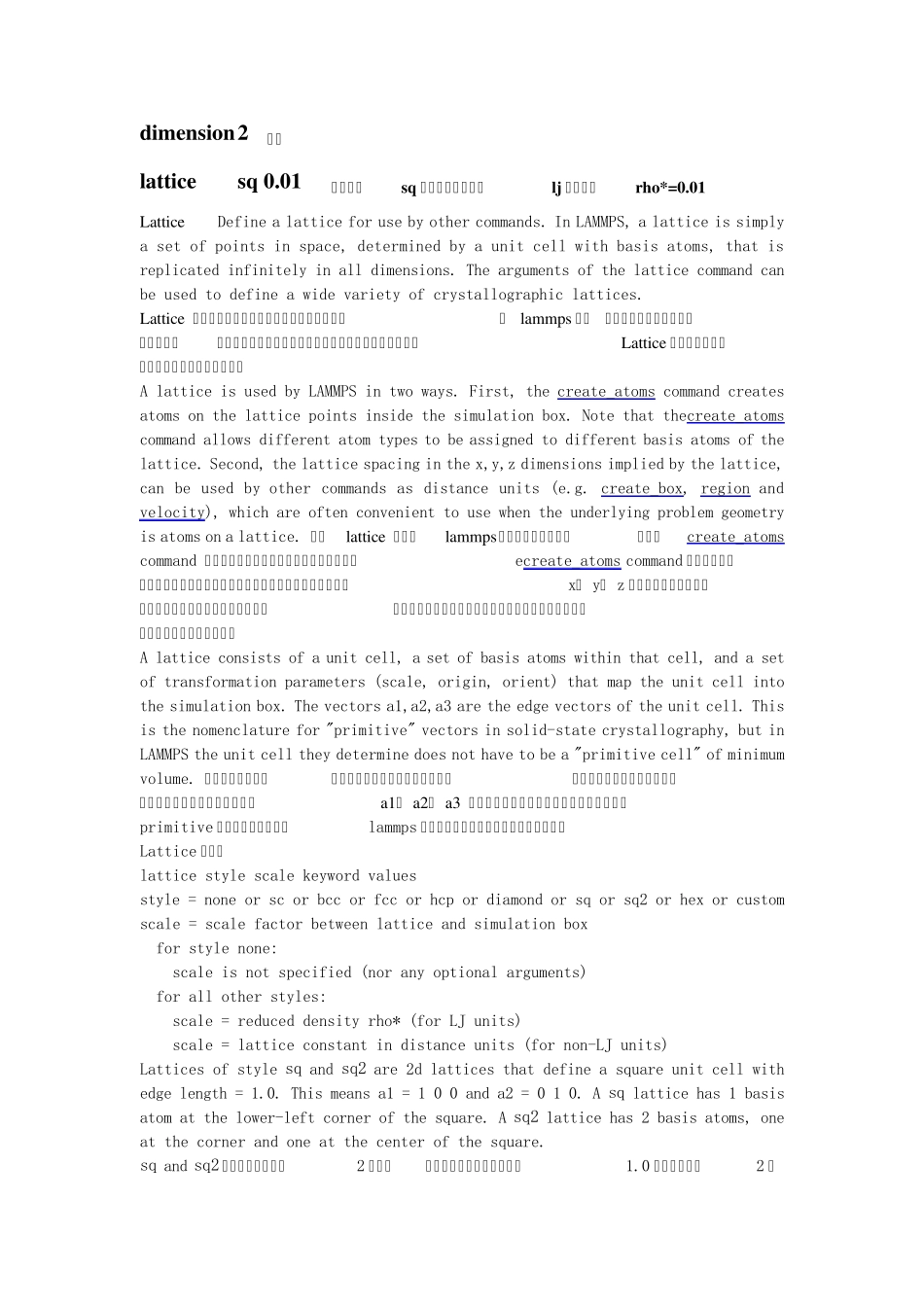# Big colloid particles and small LJ particles units lj This command sets the style of units used for a simulation. It determines the units of all quantities specified in the input script and data file, as well as quantities output to the screen, log file, and dump files. Typically, this command is used at the very beginning of an input script. 这个指令设定模拟的格式,它决定了在输入脚本文件和数据文件以及在屏幕上显示的输出物,日志文件和垃圾文件中所有的单元格式。典型的是,它经常用于输入脚本的开头 For style lj, all quantities are unitless. Without loss of generality, LAMMPS sets the fundamental quantities mass, sigma, epsilon, and the Boltzmann constant = 1. The masses, distances, energies you specify are multiples of these fundamental values. The formulas relating the reduced or unitless quantity (with an asterisk) to the same quantity with units is also given. Thus you can use the mass & sigma & epsilon values for a specific material and convert the results from a unitless LJ simulation into physical quantities. 对于lj 格式,所有数量都是无量纲的。不失一般性的,lammps 设定了基本量 质量 sigma epsilon 和波尔兹曼常数=1。你定义的 质量,距离,能量 是这些基本值的倍数。公式把衰减量或者是无量纲量(用*)和单元给出的相同的量关联起来。因此你可以用mass, sigma,epsilon 值表示一个具体材料并且改变一个无量纲lj 模拟的物理量的结果。 mass = mass or m distance = sigma, where x* = x / sigma time = tau, where tau = t* = t (epsilon / m / sigma^2)^1/2 energy = epsilon, where E* = E / epsilon velocity = sigma/tau, where v* = v tau / sigma force = epsilon/sigma, where f* = f sigma / epsilon torque = epsilon, where t* = t / epsilon temperature = reduced LJ temperature, where T* = T Kb / epsilon pressure = reduced LJ pressure, where P* = P sigma^3 /...


